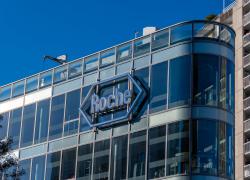
No keeping the red light on for Sting
CuraDev and OncoNano move into phase 1, trying to avoid the negative precedent of other Sting agonist projects.
CuraDev and OncoNano move into phase 1, trying to avoid the negative precedent of other Sting agonist projects.

Repeated failures of various attempts at hitting the Sting pathway have not deterred further work. Just last week saw the planned entry into first-in-human studies of two Sting agonists: CuraDev’s CRD3874, and ONM-501, a “dual activating” project in development by the private US biotech OncoNano Medicine.
This highlights the ongoing work with this molecular target, now including no fewer than 16 clinical assets, according to OncologyPipeline. Sting was once all the rage, spurring a momentous 2015 tie-up between Aduro and Novartis worth $225m up front, but has subsequently seen numerous setbacks – most recently to a Mersana antibody-drug conjugate optioned to GSK last year for an amazing $100m.
That deal had been the latest sign that enthusiasm for the Sting pathway wasn’t waning. GSK, which already had a conventional small-molecule Sting agonist, GSK3745417, secured an option over Mersana’s XMT-2056, an ADC that targets HER2 and carries a Sting agonist payload; the size of the option fee was notable given that XMT-2056 was then only in preclinical development.
As soon as phase 1 began, however, Mersana encountered a setback. The trial was put on US clinical hold in March after the death of a patient was deemed related to XMT-2056; the hold is still in place.
The big one
Perhaps the biggest endorsement of this pathway came with that Novartis deal with Aduro, a tie-up partly driven by the Sting agonist ADU-S100, done just before Aduro pulled of a Nasdaq IPO.
But five years later, after disappointing results, work on ADU-S100 was wound down, and Aduro ended up as a shell company into which Chinook Therapeutics reversed. Somewhat ironically, Novartis ended up taking over Chinook in a deal worth $3.2bn three months ago, though by now Sting was clearly not a focus of the Chinook business.
There have been further deals and disappointments alike. Bristol-Myers Squibb paid $300m for the Sting player IFM Therapeutics, and Abbvie acquired Mavupharma for an undisclosed amount. Bristol’s BMS-986301 remains in development, though the Mavupharma-derived MAVU-104 never entered clinical trials, so four years after the deal that asset looks likely to have been deprioritised.
F-Star was last year bought by China’s Sino Bio, partly on the strength of its Sting candidate SB 11285, which is delivered IV rather than intratumourally, and remains in phase 1. Meanwhile, Merck & Co has discontinued an in-house Sting agonist, ulevostinag (MK-1454), whose first clinical data stunned the 2018 ESMO meeting with a 0% response rate as monotherapy.
Clinical-stage projects with activity on Sting
| Project | Mechanism | Company | Key trial |
|---|---|---|---|
| Phase 2 | |||
| IMSA101/ GB492 | Sting agonist | ImmuneSensor | NSCLC and renal cancer, on top of Pulsar-ICI |
| Phase 1 | |||
| BI 1387446 | Sting agonist | Boehringer Ingelheim | Solid tumours, +/- ezabenlimab |
| BI 1703880 | 2nd-gen Sting agonist | Boehringer Ingelheim | Solid tumours, + ezabenlimab |
| BMS-986301 | Sting agonist | Bristol Myers Squibb (ex IFM) | Solid tumours, +/- Opdivo/Yervoy |
| E7766 | Sting agonist | Eisai | Input-102, non-muscle invasive bladder cancer |
| GSK3745417 | Sting agonist | GSK | Myeloid malignancies |
| HG381 | Sting agonist | HitGen | Solid tumours |
| KL340399/ A296 | Sting agonist | Kelun Pharmaceutical | Solid tumours |
| TAK-676/ CRD5500 | Sting agonist | Takeda/ Curadev | Keytruda combo |
| SB 11285 | Sting agonist | Sino Biopharm (ex F-Star) | Solid tumours, +/- Tecentriq |
| SNX281 | Sting agonist | Stingthera | Solid tumours & lymphoma, +/- Keytruda |
| ONM-501 | Sting agonist with PC7A micelles | OncoNano Medicine | Solid tumours & lymphoma, +/- Libtayo |
| CRD3874 | Sting agonist | Curadev Pharma | Sarcoma & Merkel cell |
| TAK-500 | Anti-CCR2 ADC with Sting agonist payload | Takeda | Solid tumours, +/- Keytruda |
| XMT-2056 | Anti-HER2 ADC with Sting agonist payload | Mersana (GSK option) | HER2+ve solid tumours (trial on hold) |
| CDK-002 exoSTING | Sting agonist-containing exosomes | Codiak BioSciences (filed for bankruptcy protection in Mar 2023) | Solid tumours (study paused) |
Source: OncologyPipeline.
It should be stressed that not all the Sting projects are the same; Takeda, for instance, is similar to Mersana in developing TAK-500 an ADC that hits CCR2 and delivers a Sting payload, in its case TAK-676, an agonist also being trialled separately. Interestingly, TAK-676 was licensed from Curadev.
Codiak BioSciences had an exoSTING technology, and was working on CDK-200, comprising exosomes loaded with a small-molecule Sting agonist, designed to allow delivery directly to antigen-presenting cells, saying exoSTING was a hundredfold more potent than free Sting agonists while avoiding systemic exposure. However, the group filed for bankruptcy earlier this year.
Curadev’s CRD3874 appears to be a standard Sting agonist, while at AACR this year OncoNano presented ONM-501 as an agonist that additionally employs PC7A, a synthetic polymer that allows a dual “burst” and sustained Sting activation. The phase 1 trials will soon show whether both projects are viable in humans.
This story was updated to reflect the status of CDK-002 exoSTING and the Codiak bankruptcy proceedings.
2146













